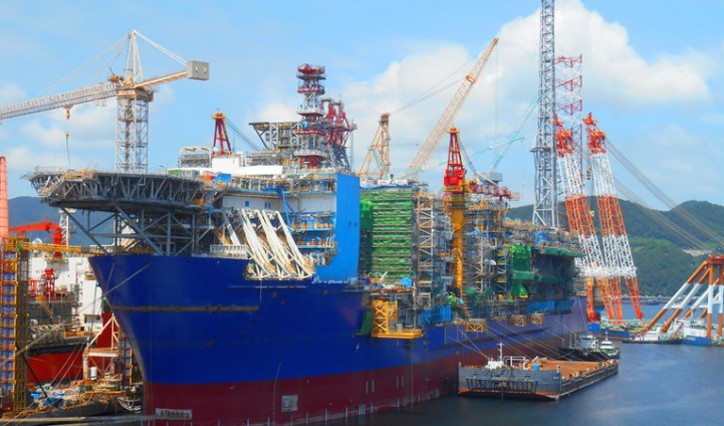The INPEX-led Ichthys LNG Project has reached a key milestone with both its Central Processing Facility (CPF) and Floating Production, Storage and Offloading (FPSO) facility safely starting up their main power generators in the South Korean shipyards where they are being constructed.
Friday (Sept 09), in the Samsung Heavy Industries shipyard in Geoje, the CPF’s three generators run by 25 megawatt dual-fuel gas turbines energised the facility’s distribution network.

The Ichthys LNG Project’s 336 metre floating production, storage and offloading facility will be used for condensate dewatering, stabilisation, storage and export. - Image courtesy: Inpex
The CPF milestone followed the FPSO’s main turbo-generators being started up on 28 July 2016 at the nearby Daewoo Shipbuilding & Marine Engineering yard in Okpo.
Ichthys Project Managing Director Louis Bon said this achievement signalled commissioning was well underway for the two facilities.
“Starting up the main generators of the FPSO and CPF allows the commissioning to further progress by providing the required power for both massive offshore facilities,” he said.
“These milestones have been safely reached thanks to the highest safety standards being implemented on the Project and the technical skills of teams on site and supporting from Perth,” Mr Bon reported.
Following the successful firing of the main power generation units, the focus will now be on load testing, synchronisation and commissioning of the power distribution systems for both offshore facilities.
This will allow the permanent utilities on board each facility to be made fully available.
The CPF and FPSO will be permanently moored for 40 years of operation in the Ichthys Field, located in the Timor Sea about 220 kilometres off the Western Australian coast.
Gas will undergo initial processing on the CPF to extract condensate and water, and remove impurities in order to make the gas suitable for transmission.
Most condensate will be transferred from the CPF to the nearby FPSO for offshore processing, with the remainder sent to Darwin with the gas via the Project’s 890 kilometre gas export pipeline.
More condensate will be extracted from the gas at the onshore plant in Darwin. Once in the field, the FPSO and CPF will be linked by an electric cable, allowing power supply to flow from each facility as a contingency measure as required.
Source: Inpex